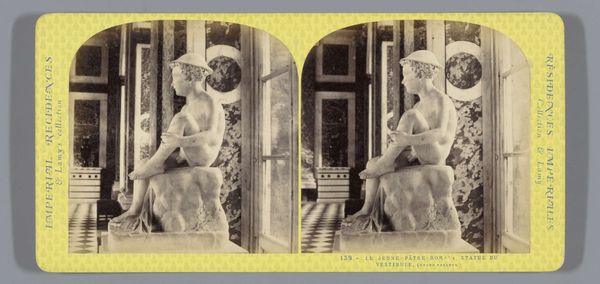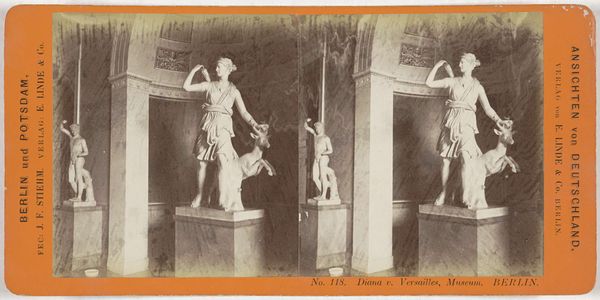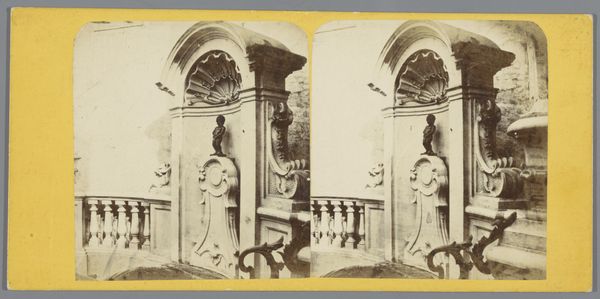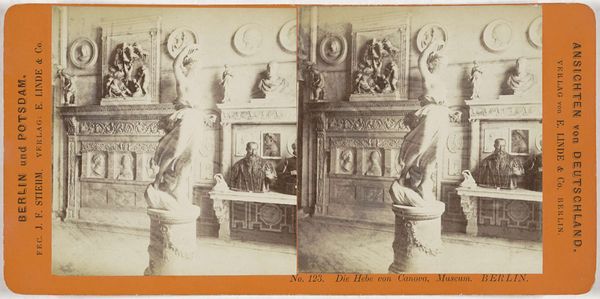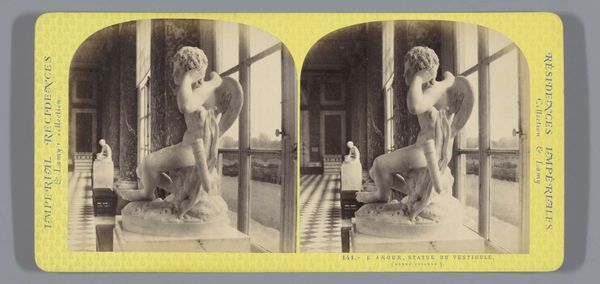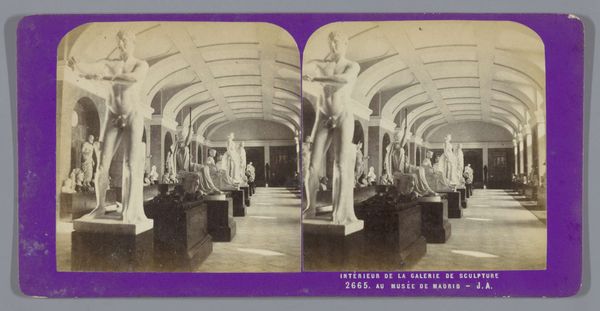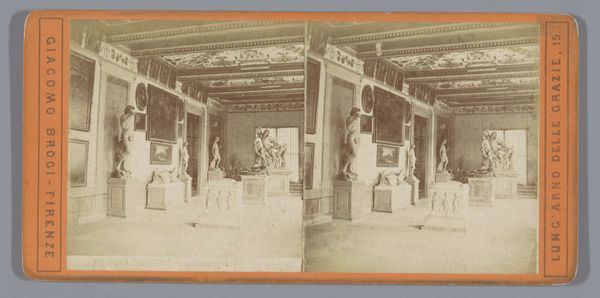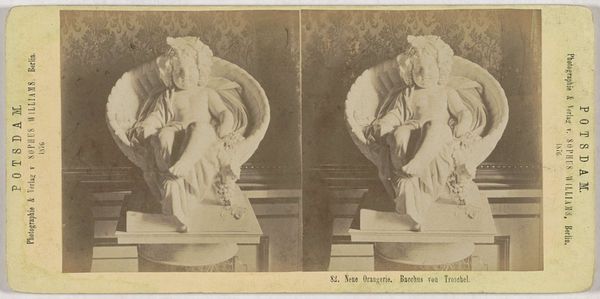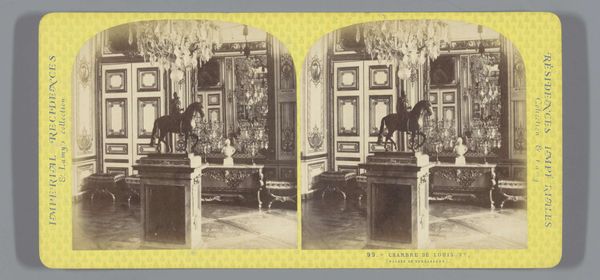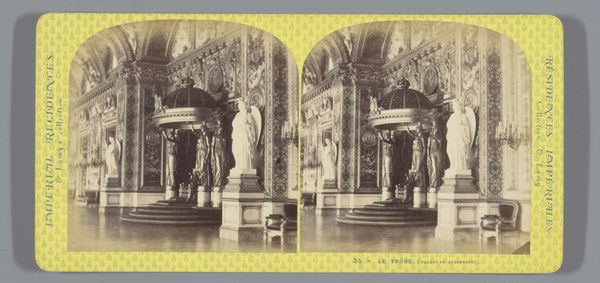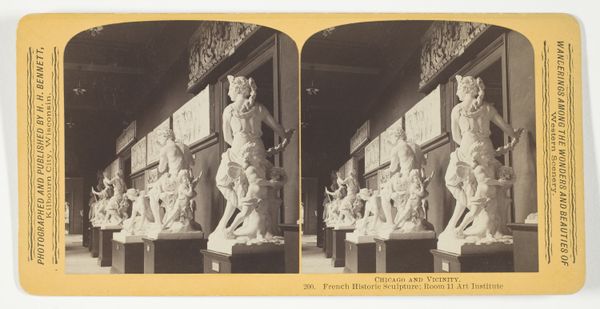
Standbeeld van Napoleon Eugène Lodewijk Bonaparte in een salon in het Palais des Tuileries te Parijs before 1871
0:00
0:00
Dimensions: height 85 mm, width 170 mm
Copyright: Rijks Museum: Open Domain
Here we see a stereoscopic card by Ernest Eléonor Pierre Lamy depicting a statue of Napoleon Eugène Louis Bonaparte in a salon within the Palais des Tuileries in Paris. This photograph invites us to consider the performance of power and identity in 19th-century France. The statue, placed within the opulent interior of the Palais des Tuileries, speaks to the construction of imperial masculinity and the Bonaparte dynasty's attempt to solidify its legacy through art and architecture. This image exists in the context of France's complex relationship with its imperial past. The choice to depict Napoleon's son evokes a sense of nostalgia for the empire, even as it hints at the fragility of dynastic succession and the weight of expectation placed on the young prince. Consider how this photograph might have been received by different audiences at the time. For some, it would have been a symbol of national pride and imperial ambition, while others may have viewed it as a reminder of authoritarian rule. The statue in the salon becomes a stage upon which narratives of power, gender, and national identity are played out, inviting us to reflect on the stories we tell ourselves about history and its enduring impact.
Comments
No comments
Be the first to comment and join the conversation on the ultimate creative platform.
